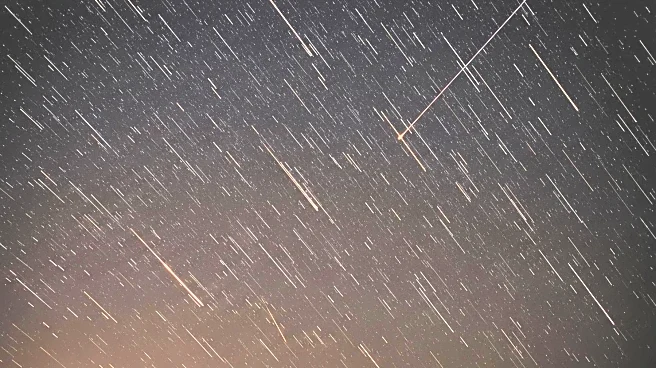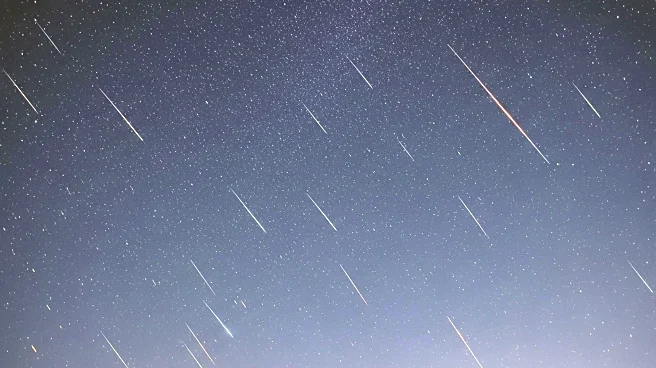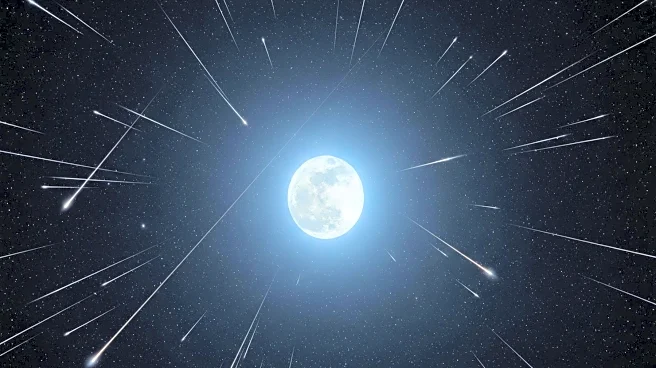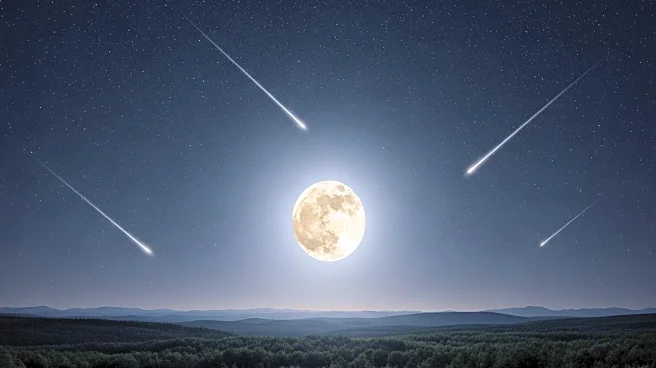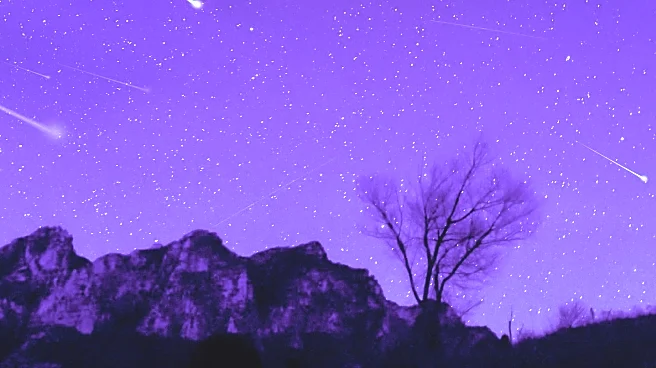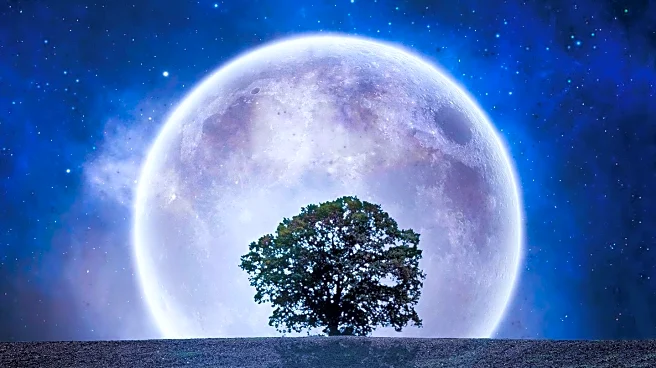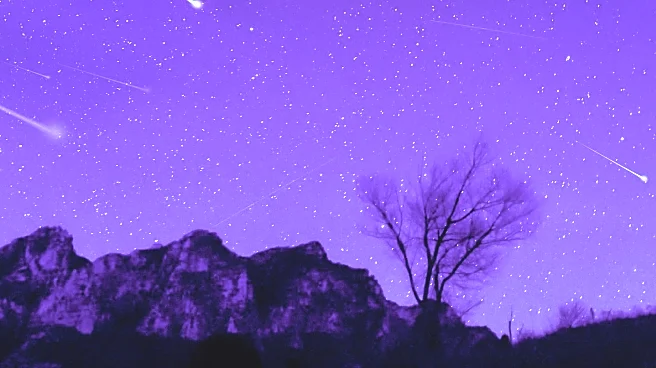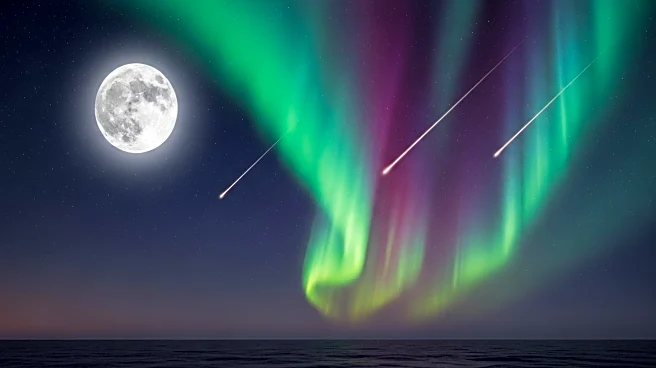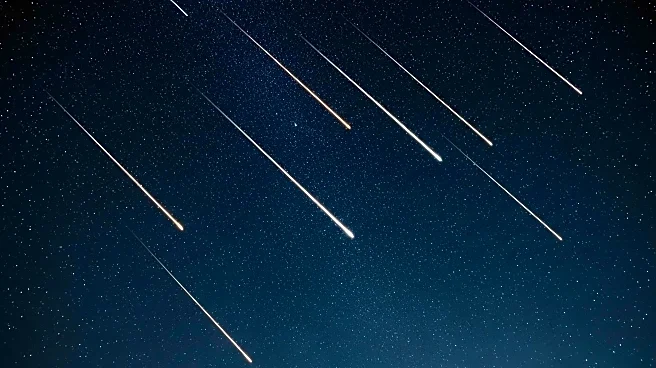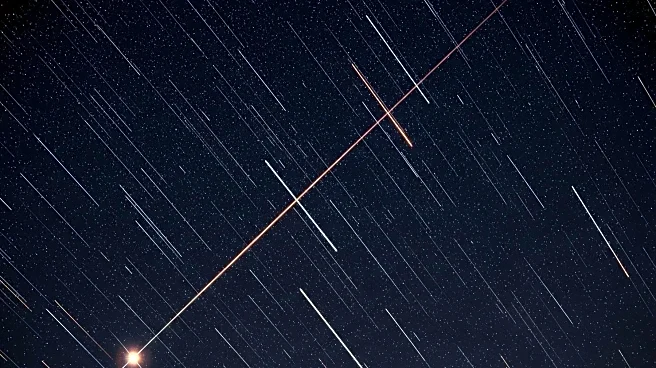What's Happening?
The Draconid meteor shower is set to peak on October 8, offering skywatchers in the Northern Hemisphere a chance to see bright 'fireballs'. Despite predictions of only 10 meteors per hour, the Draconids are known for their dramatic displays. The shower originates from Comet 21P/Giacobini-Zinner, which leaves debris in its wake every 6.5 years. The full Harvest Moon may bleach the night sky, making only the brightest meteors visible. The Draconids are unique as they are best viewed soon after dark, unlike most meteor showers.
Why It's Important?
The Draconid meteor shower provides a unique opportunity for observers to witness bright meteors early in the evening, making it accessible to a wider audience. This event highlights the variability of meteor showers and the influence of lunar phases on visibility. It underscores the importance of understanding celestial mechanics and their impact on observational astronomy. The event can stimulate interest in astronomy and encourage public participation in skywatching activities.
What's Next?
Observers are encouraged to look for the Draconids soon after dark on October 8. The presence of the full moon means that only the brightest meteors will be visible. Skywatchers should also be aware of potential northern lights due to geomagnetic activity. Additionally, two comets, Lemmon and SWAN R2, may be visible with binoculars or telescopes, offering more opportunities for observation.
Beyond the Headlines
Meteor showers like the Draconids offer insights into the behavior of comets and the solar system's dynamics. The variability of the Draconids highlights the unpredictable nature of celestial events. Observing these showers can contribute to scientific understanding of cometary debris and its interaction with Earth's atmosphere.

